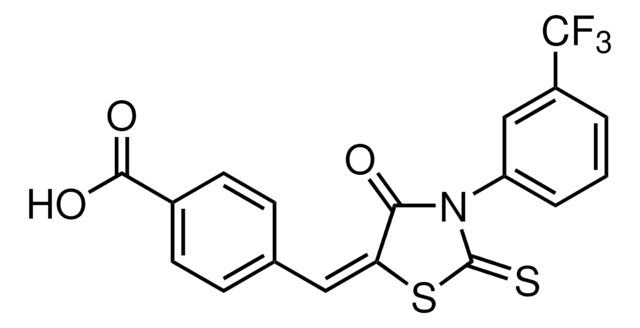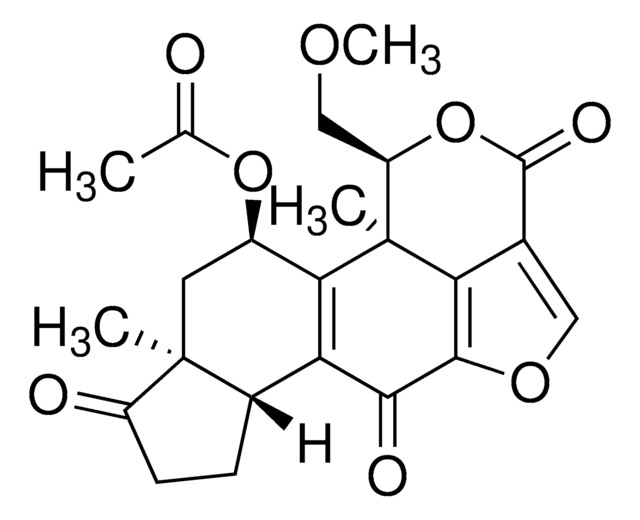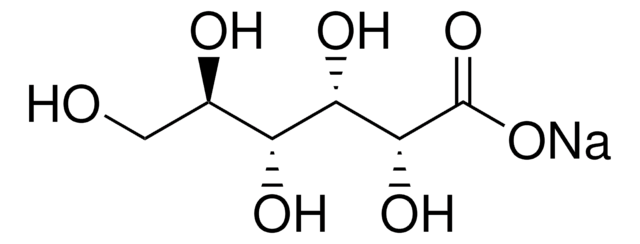219671
GlyH-101
≥97% (HPLC), solid, CFTR inhibitor, Calbiochem®
Synonym(s):
CFTR Inhibitor II, GlyH-101, N-(2-Naphthalenyl)-((3,5-dibromo-2,4-dihydroxyphenyl)methylene)glycine hydrazide
About This Item
Recommended Products
Product Name
CFTR Inhibitor II, GlyH-101, CFTR Inhibitor II, GlyH-101, CAS 328541-79-3, is a cell-permeable potent, selective and reversible open-channel blocker of CFTR (Ki = 4.3 µM in CFTR-expressing FRT cells).
Quality Level
Assay
≥97% (HPLC)
form
solid
manufacturer/tradename
Calbiochem®
storage condition
OK to freeze
color
yellow
solubility
DMSO: 200 mg/mL
shipped in
ambient
storage temp.
2-8°C
InChI
1S/C19H15Br2N3O3/c20-15-8-13(18(26)17(21)19(15)27)9-23-24-16(25)10-22-14-6-5-11-3-1-2-4-12(11)7-14/h1-9,22,26-27H,10H2,(H,24,25)/b23-9+
InChI key
RMBDLOATEPYBSI-NUGSKGIGSA-N
General description
Biochem/physiol Actions
CFTR
Warning
Reconstitution
Other Notes
Muanprasat, C., et al. 2004. J. Gen. Physiol.124, 125.
Legal Information
Storage Class Code
11 - Combustible Solids
WGK
WGK 2
Flash Point(F)
Not applicable
Flash Point(C)
Not applicable
Regulatory Listings
Regulatory Listings are mainly provided for chemical products. Only limited information can be provided here for non-chemical products. No entry means none of the components are listed. It is the user’s obligation to ensure the safe and legal use of the product.
JAN Code
219671-5MG:
219671-VMG:
Certificates of Analysis (COA)
Search for Certificates of Analysis (COA) by entering the products Lot/Batch Number. Lot and Batch Numbers can be found on a product’s label following the words ‘Lot’ or ‘Batch’.
Already Own This Product?
Find documentation for the products that you have recently purchased in the Document Library.
Customers Also Viewed
Our team of scientists has experience in all areas of research including Life Science, Material Science, Chemical Synthesis, Chromatography, Analytical and many others.
Contact Technical Service










